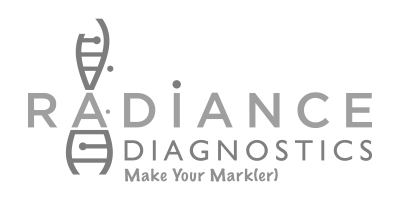Description
What is a respiratory pathogens (RP) panel?
A respiratory pathogens (RP) panel checks for pathogens in the respiratory tract. A pathogen is a virus, bacteria, or other organism that causes an illness. Your respiratory tract is made up of parts of the body involved in breathing. This includes your lungs, nose, and throat.
There are many types of viruses and bacteria that can infect the respiratory tract. Symptoms are often similar, but treatment can be very different. So it’s important to make the right diagnosis. Other viral and bacterial tests for respiratory infections are often limited to testing for one specific pathogen. Several samples may be needed. The process can be difficult and time-consuming.
An RP panel only needs a single sample to run tests for a wide variety of viruses and bacteria. Results usually come in a few hours. Results from other types of respiratory tests can take a few days. Faster results may allow you to get started earlier on the right treatment.
Other names: RP panel, respiratory virus profile, syndromic multiplex panel
What is it used for?
A respiratory pathogens panel is used to help diagnose:
Viral infections, such as:
- Flu
- Common cold
- Respiratory syncytial virus (RSV). This is a common and usually mild respiratory infection. But it can be dangerous to babies and the elderly.
- Adenovirus infection. Adenoviruses cause many different types of infections. These include pneumonia and croup, an infection that causes hoarse, barking coughs.
- COVID-19
Bacterial infections, such as:
- Whooping cough
- Bacterial pneumonia
Why do I need a respiratory pathogens panel?
You may need this test if you have symptoms of a respiratory infection and are at risk for complications. Most respiratory infections cause mild to moderate symptoms. But the infections can be serious or even life threatening to young children, the elderly, and people with weakened immune systems.
Symptoms of a respiratory infection include:
- Coughing
- Trouble breathing
- Sore throat
- Stuffy or runny nose
- Fatigue
- Loss of appetite
- Fever
What happens during a respiratory pathogens panel?
There are two ways a provider may take a sample for testing:
Nasopharyngeal swab:
- You will tip your head back.
- Your health care provider will insert a swab into your nostril until it reaches the upper part of your throat.
- Your provider will rotate the swab and remove it.
Nasal aspirate:
- Your provider will inject a saline solution into your nose, then remove the sample with gentle suction.
Will I need to do anything to prepare for the test?
You don’t need any special preparations for a respiratory pathogens panel.
Are there any risks to the test?
The swab test may tickle your throat or cause you to cough. The nasal aspirate may be uncomfortable. These effects are temporary.
What do the results mean?
A negative result may mean your symptoms were caused by a pathogen not included in the panel of tests. It may also mean you have a condition not caused by a virus or bacteria.
A positive result means a specific pathogen was found. It tells you which type of infection you have. If more than one part of the panel was positive, it means you may be infected with more than one pathogen. This is known as a co-infection.
Based on your results, your provider will recommend treatment and/or order more tests. These may include a bacteria culture, viral blood tests, and a Gram stain. The tests may help confirm your diagnosis and guide treatment.
If you have questions about your results, talk to your healthcare provider.
Source: MedlinePlus, National Library of Medicine
MedlinePlus brings together authoritative health information from the National Library of Medicine (NLM), the National Institutes of Health (NIH), and other government agencies and health-related organizations.
https://www.cdc.gov/asthma/respinf.html
https://www.cepheid.com/en-US/education/knowing-more-matters/covid-flu-rsv.html
https://medlineplus.gov/lab-tests/respiratory-pathogens-panel/


